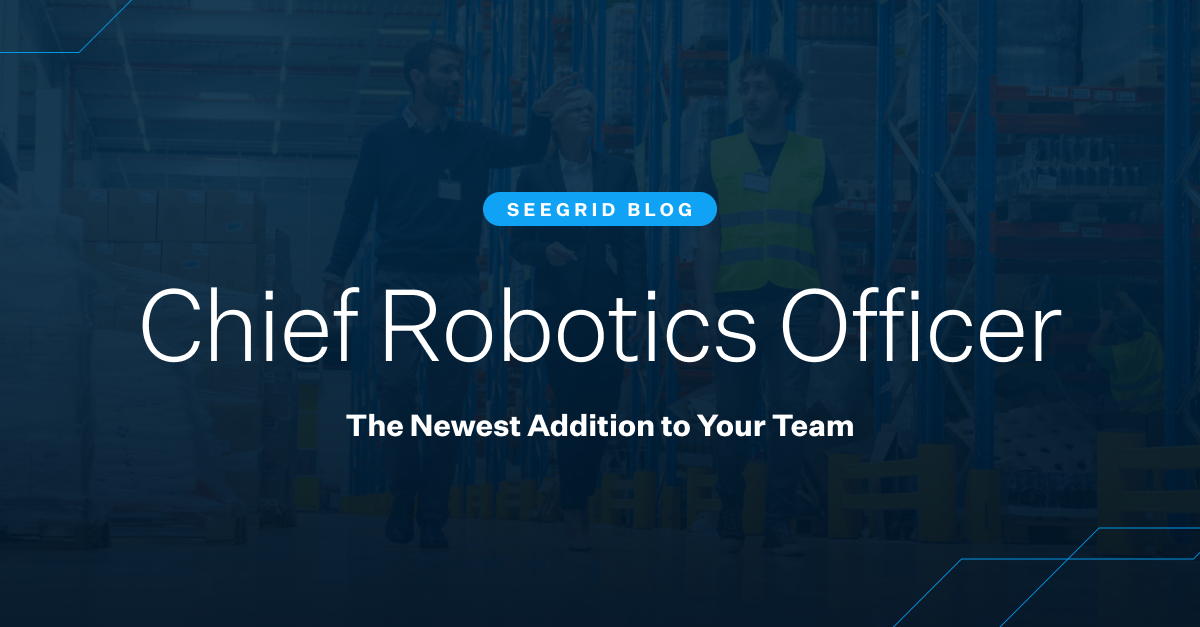For centuries, companies have focused on people-centric management structures, in which humans recruit, hire, train, manage, and reward other humans for their work. While this model remains tried and true, new opportunities are emerging for supply chain-dependent industries. Now, as companies increasingly turn to automation, facilities not only need to focus on leading and managing a successful team of humans, but also their robots.
Robotics, AI, and Automation on the Rise
Operational demands continue to fluctuate and build for manufacturing, warehousing, and logistics facilities across all industries. Companies are tirelessly trying to fulfill record-high demand levels with a strained human workforce due to labor shortages. Industrial automation has proven to be essential for companies to continue delivering on time without disruptions, despite any challenges or changes that may arise.
Automation has been steadily growing over the years, and it is predicted to continue doing so for many years to come. In fact, the global market for robots is forecasted to increase at a CAGR of roughly 26% by 2025.
Material handling automation plays an increasingly crucial role in a company’s operational success, which has led to the creation of a new executive leadership role within the C-suite of upper management—the Chief Robotics Officer (CRO)—to strategically plan, implement, and drive adoption of new technologies for continuous improvement with humans and robots working seamlessly together.
An Automation Strategy for Success
Today, there are several different approaches to optimizing material flow, whether a company explores automated conveyor systems, autonomous mobile robots (AMRs), automatic identification and data collection (AIDC) systems, among many other automated techniques. In addition to several types of automation solutions available on the market today, the technology itself keeps rapidly innovating and becoming more sophisticated to safely and reliably answer supply chain demands. Adding another level of potential complexity, it is important that implemented technologies can seamlessly integrate with one another as companies automate more tasks across their facilities.
Many companies are finding that they don’t have the internal expertise in robotics and automation amongst their workforce to confidently select, launch, implement, and continue managing a successful program. Oftentimes, without a strategic plan in place, companies are still trying to figure out who should own and manage their robotic fleets as new technologies are implemented.
A Chief Robotics Officer is instrumental in ensuring a company selects and implements the right solution that delivers results, both in terms of daily goals as well as long-term initiatives. They also are responsible for managing the blending of human and robotic workers within workflows and processes. With robotics playing a major role in supply chain success, companies need a strategic automation plan that can easily be implemented and can deliver for years to come with safe and productive human-machine partnerships.
Dwight Klappich, Vice President Analyst with Gartner® stated, “Automation is going to be much more strategy-led going forward. If a retailer wants to establish an automated micro fulfillment center, there needs to be a strategy on how this will come to be. Someone must take on the leadership role and develop this strategy and the organization to implement it. This person needs in-depth technology skills, but also must have a sense for how automation fits into the broader organization and drives value to the business.”[1]
Identifying the Right Skill Set for Your Chief Robotics Officer
Who is an ideal candidate for a CRO role? This position needs someone who understands and excels in a few key areas: engineering, IT, and business problem-solving realms—departments that often have many cultural differences within a company.
This individual should have a deep understanding of how different automation technologies work, the best fit options for their industry, as well as the use cases that are applicable within their facilities. They also need to be able to collaborate with IT to create strategies for seamless integrations into their existing systems. This individual needs to ensure that their strategy helps drive overall business initiatives and goals, with human employees and robots working seamlessly together.
With a strong understanding of how automation works as well as their facilities’ workflows and goals, this individual will be able to quickly and effectively collaborate with automation vendors to develop a plan. The CRO and automation vendor can align to understand the areas that can be improved, set goals, create automation solutions that fit within existing infrastructure, develop a training plan for human coworkers, and define what success looks like.
Planning for Today and the Future
The number of robotics-related initiatives across companies is rapidly growing. A CRO can prioritize which automation projects to start with and how to effectively execute each project to deliver a strong ROI at the facility level and also across an entire enterprise. Facilities need to ensure that their automation solution doesn’t just answer today’s challenges, but can also adapt and scale for future growth and changes over time. A CRO is an in-house expert who is dedicated to keeping up with the latest solutions that provide business value and reduce risks for a facility’s specific needs, on a daily basis and into the future.
One key factor to long-term automation success is employee adoption of the new technologies. The CRO is responsible for the relationship and interaction between robots and human coworkers. They serve as a robotics champion and develop initiatives with a strategic vision to drive automation adoption. With employees confidently utilizing AMRs and automation correctly, facilities will be able to quickly and easily scale for growth. The CRO can work directly with AMR or other automation vendors to collaborate and develop a plan for a successful implementation that drives continuous improvement—creating safer, more productive workflows.
Once a solution is implemented, the CRO can then utilize actionable data from AMR fleet analytics software to gain visibility into operations, measure performance, make adjustments to plans and strategies, and make improvements that drive efficiencies. Instead of sitting down with employees to create performance improvement plans, these leaders will determine what is required to improve the performance of their automated workforce.
As operational demands continue to grow for supply chains, pressures for facilities to deliver faster, better, and for less will keep climbing. Companies will increasingly turn to AMRs, automation, and software solutions to streamline for success. It’s likely that this new CRO role will evolve over time, gaining more importance as automation continues moving to the forefront. With the right tools, resources, and strategy in place, a CRO can ensure their facilities are safely, reliably, and efficiently achieving their goals.
[1] Gartner Press Release, “Gartner Says Supply Chain Organizations Need a Chief Robotics Officer to Strategically Implement Robotics and Automation”, 14 September 2021 (https://www.gartner.com/en/newsroom/press-releases/2019-09-14-gartner-says-supply-chain-organizations-need-a-chief-robotics-officer-to-strategically-implement-robotics-and-automation) GARTNER is a registered trademark and service mark of Gartner, Inc. and/or its affiliates in the U.S. and internationally and is used herein with permission.
Infographic: Mapping the Route to Automation Success
Download this infographic to learn how to strategically implement your AMR fleet to drive day-to-day goals and long-term initiatives.







